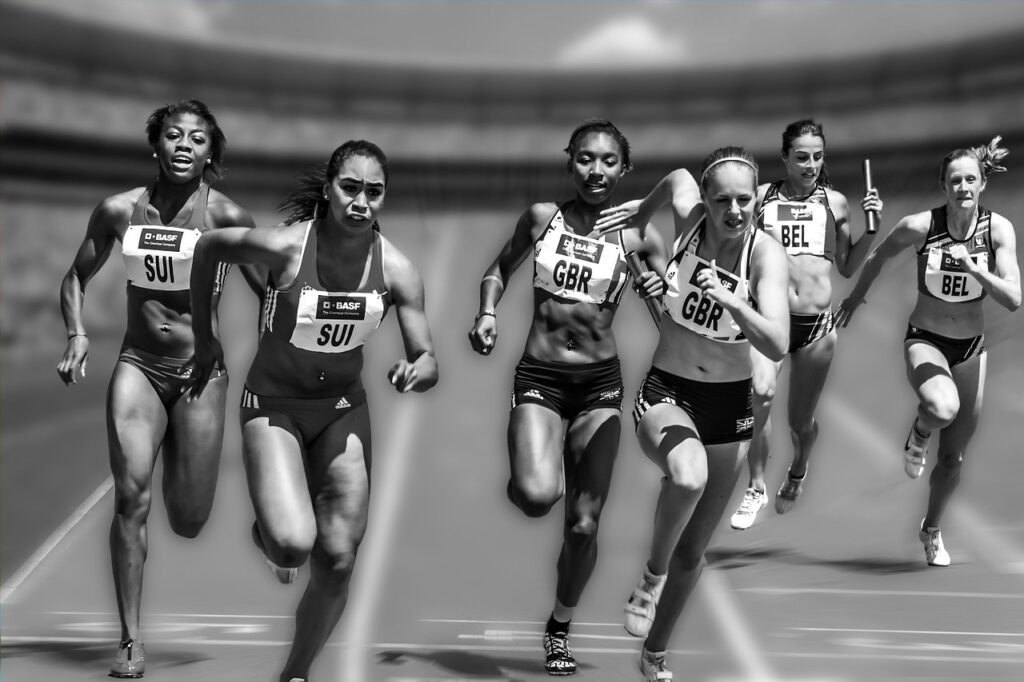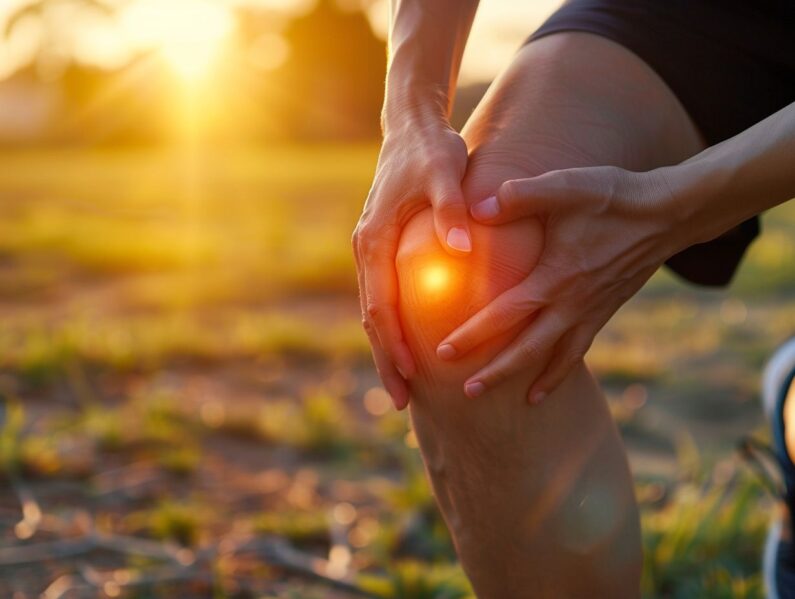If you’re a runner who has experienced lateral knee pain after a run, you’re not alone. This common issue can be caused by a variety of factors, including IT band syndrome, patellofemoral pain syndrome, meniscus tears, and LCL injuries.
In this article, we’ll explore the potential causes of lateral knee pain, prevention strategies such as proper warm-up and strengthening exercises, treatment options like rest and physical therapy, and tips for safely resuming running post-recovery. Let’s dive in and learn more about how to tackle lateral knee pain and get back to enjoying your runs pain-free.
What Causes Lateral Knee Pain After Running?
Lateral knee pain after running can be caused by various factors such as IT band syndrome, patellar tracking issues, meniscus tears, and overpronation. These conditions can lead to discomfort, inflammation, and sharp pain in the lateral area of the knee due to the stress placed on the joint and surrounding structures.
IT band syndrome, characterized by tightness and friction of the iliotibial band running along the outer thigh, is a common culprit. When this band becomes tight or inflamed, it can cause lateral knee pain.
Patellar tracking issues, where the kneecap doesn’t move smoothly within the groove of the femur, may lead to lateral knee discomfort.
Meniscus tears, often seen in athletes due to repetitive stress, can manifest as sharp pain on the side of the knee after running.
IT Band Syndrome
IT band syndrome is a common cause of lateral knee pain in runners, characterized by inflammation and discomfort along the outer thigh and knee area. The iliotibial band, a thick band of tissue that runs from the hip to the shin, can become tight or inflamed due to overpronation or biomechanical issues.
When the IT band becomes tight or inflamed, it can lead to IT band syndrome, causing issues with knee alignment and muscle imbalances. This condition often results from repetitive motions such as running that put stress on the tendon and ligaments of the knee. Overpronation, where the foot rolls inward excessively during running, can exacerbate the strain on the IT band, increasing the risk of developing this painful syndrome. Proper running biomechanics, including adequate warm-up, stretching, and strengthening exercises, play a crucial role in preventing and managing IT band syndrome.
Patellofemoral Pain Syndrome
Patellofemoral pain syndrome, also known as runner’s knee, can manifest as sharp pain around the kneecap during and after running. This condition is often caused by muscle imbalances, overuse, and improper tracking of the patella within the femoral groove.
Weakness in the quadriceps muscles can lead to an imbalance in the forces acting on the patella, resulting in increased pressure and friction. Poor joint alignment or abnormalities in the way the patella moves within the femoral groove can contribute to patellofemoral pain. Muscle fatigue, especially in the quadriceps, can further exacerbate the issue, as tired muscles are unable to properly support the knee joint during physical activities like running, leading to increased stress on the patellofemoral joint.
Meniscus Tear

A meniscus tear can lead to lateral knee pain after running, especially if the tear affects the lateral meniscus. This injury can cause discomfort, swelling, and a feeling of instability in the knee joint, impacting the overall stability and function during running.
Individuals with a meniscus tear may also experience clicking or locking of the knee joint, further hindering their ability to engage in physical activities. If left untreated, a meniscus tear can increase the risk of developing cartilage damage, leading to long-term joint issues such as osteoarthritis. In sports-related knee injuries, meniscus tears are often accompanied by ligament sprains, requiring specialized care from sports medicine professionals for proper diagnosis and rehabilitation.
Lateral Collateral Ligament (LCL) Injury
An LCL injury can result in lateral knee pain after running, affecting the stability of the knee joint. This type of injury can be diagnosed through a thorough knee examination by an orthopedic specialist, focusing on the range of motion, ligament integrity, and potential need for diagnostic tests.
The impact of an LCL injury on knee stability can disrupt daily activities and lead to chronic issues if left untreated. Orthopedic assessments may include stress tests to evaluate the integrity of the ligaments and determine the extent of the injury. Accurate diagnosis is crucial for creating a tailored treatment plan that may involve physical therapy, bracing, or even surgery to prevent further damage and promote proper healing. Regular knee examinations are essential in identifying potential injuries early on, allowing for timely intervention and minimizing long-term complications.
How Can Lateral Knee Pain Be Prevented?
Preventing lateral knee pain after running involves a comprehensive approach that addresses the underlying causes and risk factors. Strategies include proper warm-up routines, cross-training activities, and exercises to improve muscle imbalances and knee alignment.
Cross-training, such as cycling or swimming, can help reduce the repetitive stress on the knees from running.
Building strength in the surrounding muscles, particularly the quadriceps, hamstrings, and calves, is essential for better knee support.
Focusing on biomechanics, such as proper running form and foot strike, can alleviate strain on the knees.
Wearing appropriate footwear that provides cushioning and support is crucial to absorb shock and minimize impact on the joints during running sessions.
Proper Warm-up and Cool-down
Engaging in a proper warm-up routine before running can help prepare the muscles, joints, and ligaments for physical activity, reducing the risk of muscle fatigue and injury. Similarly, cooling down after running with stretches can aid in maintaining flexibility and promoting post-run recovery.
Incorporating dynamic stretches like leg swings, arm circles, and lunges into your warm-up routine can enhance blood flow to the muscles and improve flexibility. These movements loosen up the muscles, making them more pliable and less prone to injury during your run.
On the other hand, a cool-down session that includes static stretches can help prevent muscle tightness and reduce the chances of post-exercise soreness. This post-run stretching can also aid in the dissipation of lactic acid buildup, enhancing endurance and facilitating quicker recovery.
Strengthening Exercises for the Hips and Knees
Incorporating strengthening exercises targeting the hip and knee muscles can help improve joint stability, correct muscle imbalances, and reduce the risk of lateral knee pain during running. Exercises focusing on the quadriceps, hamstrings, and hip abductors can enhance overall lower body strength and alignment.
Strengthening these specific muscle groups plays a crucial role in preventing injuries commonly associated with the lower body. Building strength in the quadriceps helps support the knee joint and aids in proper tracking of the patella. Similarly, working on the hamstrings not only balances out the strength ratio between the front and back of the thigh but also contributes to improved knee stability. Incorporating targeted exercises for the hip abductors can help address alignment issues and reduce the strain on the knees during physical activities.
Wearing the Right Shoes
Choosing the right footwear is crucial in preventing lateral knee pain while running, as it can help maintain proper knee alignment, reduce impact forces on the joints, and support overall joint health. The correct shoes can provide cushioning, stability, and alignment to mitigate stress on the knees.
Proper footwear plays a significant role in managing biomechanics during physical activities, especially in high-impact sports like running. When the foot strikes the ground, the shoe’s construction influences how forces are distributed throughout the body. By providing adequate cushioning and support, the shoes can help absorb shock and prevent excessive stress on the knees. This, in turn, reduces the risk of developing lateral knee pain and promotes optimal performance by ensuring proper alignment and stability for the athlete.
Avoiding Overtraining
Overtraining can exacerbate the risk of lateral knee pain in runners, especially if coupled with factors like overpronation or inadequate recovery. Following a balanced training regimen, allowing for adequate rest, and monitoring signs of muscle fatigue are essential in avoiding overtraining-related knee issues.
Consistency in training intensity is key to building endurance without straining the knees. It’s crucial to gradually increase mileage and incorporate strength training to support the knees and prevent injuries.
Incorporating cross-training activities can give the knees a break from constant impact while still maintaining fitness levels. Understanding the importance of recovery, such as proper nutrition, hydration, and quality sleep, plays a significant role in allowing the body to repair and adapt to the training demands, ensuring optimal performance and minimizing knee pain.
What Are the Treatment Options for Lateral Knee Pain?
When addressing lateral knee pain, various treatment options are available to manage the discomfort and promote healing. These options include rest and recovery, physical therapy, the use of anti-inflammatory medications, and in severe cases, surgical intervention.
Rest and recovery play a crucial role in allowing the injured knee to heal properly, giving it the necessary time to recover from any strain or overuse. Physical therapy is often recommended to strengthen the muscles around the knee, improve flexibility, and correct any underlying biomechanical issues contributing to the pain. Anti-inflammatory medications, such as ibuprofen, can help reduce swelling and alleviate pain. In cases where conservative measures are not effective, surgical intervention may be considered to address structural issues or injuries affecting the lateral aspect of the knee.
Rest and Ice
Rest and ice therapy are key components of the initial treatment for lateral knee pain, helping to reduce inflammation, manage discomfort, and support the healing process. Using ice packs and compression sleeves can aid in pain relief and promote recovery.
Rest allows the knee joint to recuperate and prevents further strain, while ice therapy helps constrict blood vessels, reducing swelling. Together, they create an optimal environment for the body to begin its healing process. Applying ice immediately after an injury can be particularly effective in decreasing inflammation and numbing the area to alleviate pain.
Utilizing knee support accessories like braces or sleeves can also provide additional stability and reduce strain on the affected area during daily activities, aiding in a quicker recovery.
Physical Therapy
Physical therapy plays a crucial role in the rehabilitation of lateral knee pain, focusing on restoring muscle strength, improving joint stability, and addressing any underlying biomechanical issues. Targeted exercises and stretches can aid in the recovery process and prevent future injuries.
By incorporating tailored rehabilitation exercises, physical therapists can help individuals regain range of motion and functionality in the affected knee. Muscle strengthening exercises not only assist in reducing pain but also enhance overall knee stability. Physical therapists play a key role in guiding patients through proper form and technique, ensuring exercises are performed safely and effectively. Through personalized treatment plans, physical therapy can significantly improve knee function and quality of life for those suffering from lateral knee pain.
Anti-inflammatory Medications
Anti-inflammatory medications are often prescribed to manage pain and reduce inflammation in cases of lateral knee pain. These medications can help alleviate chronic discomfort, reduce swelling, and improve mobility for individuals dealing with knee issues.
By targeting the inflammation in the affected area, anti-inflammatory medications work to decrease the production of prostaglandins, which are substances in the body that contribute to pain and swelling. By inhibiting these substances, the medications can provide relief from discomfort and promote healing. These medications may also help to restore normal function to the knee joint, facilitating a speedier recovery process for those experiencing lateral knee pain.
Surgery (in severe cases)
In severe cases of lateral knee pain where conservative treatments are ineffective, surgical intervention may be necessary to address structural issues or significant injuries. Surgical procedures are typically recommended after thorough diagnostic tests and consultations with orthopedic specialists.
Orthopedic specialists play a crucial role in evaluating the extent of damage and determining the most appropriate surgical approach to alleviate the pain and restore knee function. Diagnostic tests such as MRI scans and X-rays help in identifying the specific source of pain, whether it be a torn meniscus, ligament damage, or issues with the patella. The decision to opt for surgical intervention is carefully considered based on the severity of symptoms, functional limitations, and the patient’s overall health status.
When Should You See a Doctor for Lateral Knee Pain?

Seeking medical attention for lateral knee pain is crucial, especially if the pain persists or worsens over time. A doctor can conduct a comprehensive knee examination, recommend diagnostic tests, and assess the overall health of the athlete to determine the underlying cause of the pain.
This initial consultation is vital as it allows the doctor to evaluate various factors contributing to the knee pain, such as previous injuries, activity levels, and any underlying health conditions.
Through a detailed examination, including tests like X-rays or MRIs, the doctor can pinpoint specific areas of concern within the knee joint.
By understanding the athlete’s overall health, lifestyle, and exercise habits, the doctor can tailor a treatment plan that not only addresses the current pain but also prevents future occurrences.
How Can You Resume Running After Recovering from Lateral Knee Pain?
Gradually reintroducing running after recovering from lateral knee pain requires a structured approach that focuses on recovery strategies, mobility exercises, and monitoring training intensity. Listening to the body, gradually increasing mileage, and incorporating mobility exercises are essential in resuming running safely.
It is crucial to pay attention to warning signs such as increased muscle fatigue or any discomfort in the knee area. As you progress, consider adjusting the intensity of your training sessions to prevent overexertion and potential injury. Incorporating strength training exercises to build endurance and stability in the muscles surrounding the knees can also aid in injury prevention. Including regular stretching routines can improve flexibility and reduce the risk of muscle imbalances that may contribute to knee pain.
Gradually Increase Mileage and Intensity
Gradually increasing mileage and intensity is key to a successful return to running after lateral knee pain. Monitoring training intensity, analyzing gait patterns, and managing muscle fatigue can help prevent re-injury and enhance overall sports performance.
As you continue to increase your mileage post-injury, it is important to listen to your body’s signals and gradually introduce higher intensity runs. Incorporating strength training and cross-training can aid in reducing muscle fatigue and improving overall performance. Conducting a gait analysis with a professional can provide valuable insights into your running mechanics, helping you optimize your form and reduce the risk of potential injuries. By progressing cautiously and paying attention to these key elements, you can build a strong foundation for your return to running.
Listen to Your Body and Rest When Needed
Listening to your body and prioritizing rest when needed are essential elements in preventing recurrent lateral knee pain. Incorporating injury prevention tips, managing impact forces, and ensuring adequate pain relief contribute to a safe and sustainable running experience.
While pushing your limits can be thrilling, understanding the importance of recovery strategies can significantly impact your overall knee health during running. By implementing appropriate rest intervals, following a proper warm-up and cool-down routine, and engaging in cross-training activities, you provide your knees with the necessary time to recover and adapt. Managing impact forces through proper running technique, appropriate footwear selection, and gradually increasing training intensity can also reduce the risk of knee injuries. Incorporating strength and flexibility exercises targeted at supporting the knee joint can enhance stability and prevent common overuse injuries.
Continue with Strengthening Exercises
Continuing with strengthening exercises post-recovery is crucial for building muscle endurance, improving joint stability, and reducing the risk of future knee issues. Consulting an orthopedic specialist for personalized exercise plans and using appropriate knee support can aid in long-term knee health.
By regularly engaging in strengthening exercises, one can help maintain the health of their knees by developing stronger muscles around the joint. Muscle endurance plays a vital role in supporting the knee, especially during physical activities or sports that put stress on the joint. Orthopedic guidance ensures that the exercises are targeted towards strengthening the specific muscles that support the knee, reducing the likelihood of recurrent lateral knee pain. Utilizing proper knee support such as braces or sleeves can provide added stability and protection, further preventing injuries and promoting overall knee health.
Frequently Asked Questions
What causes lateral knee pain after running?
Lateral knee pain after running can be caused by a variety of factors, including overuse, improper form, muscle imbalances, and underlying conditions such as IT band syndrome or patellofemoral pain syndrome.
How can I prevent lateral knee pain after running?
To prevent lateral knee pain after running, make sure to warm up properly, maintain a balanced training program, wear proper footwear, and listen to your body for any signs of overuse or injury.
When should I seek medical attention for lateral knee pain after running?
If the pain persists or worsens, or if you experience swelling, instability, or difficulty bearing weight, it is important to seek medical attention for proper diagnosis and treatment.
Is stretching helpful for alleviating lateral knee pain after running?
Stretching can be beneficial for reducing tension and tightness in the muscles surrounding the knee, but it is important to perform stretches correctly and gradually increase intensity to avoid further pain or injury.
Can lateral knee pain after running be treated at home?
Mild cases of lateral knee pain after running can often be treated at home with rest, ice, compression, and elevation (RICE), as well as avoiding activities that aggravate the pain. However, it is important to consult a medical professional for persistent or severe pain.
Are there any exercises or strengthening techniques that can help with lateral knee pain after running?
Yes, exercises such as clamshells, lateral leg raises, and hip abductor strengthening can help improve muscle imbalances and prevent lateral knee pain after running. It is important to consult a professional for proper form and recommendations tailored to your specific needs.

My passion for martial arts goes beyond practice; it is a philosophy that shapes my writing, bringing a distinctive edge to my narratives and advice. I hold black belts in two martial arts disciplines and have competed internationally, experiences that enrich my storytelling with authenticity and excitement.

